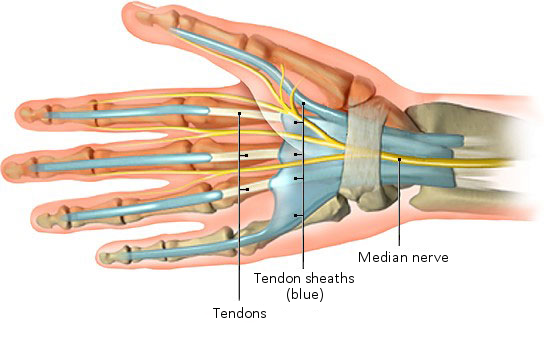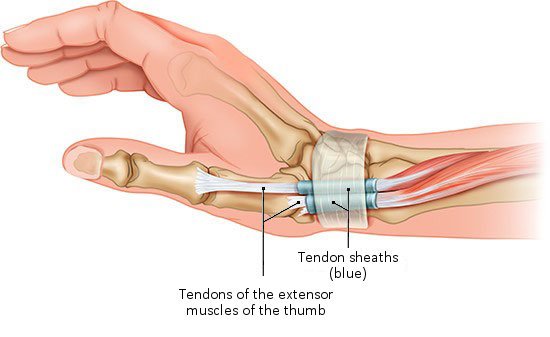Adams JE, Habbu R. Tendinopathies of the Hand and Wrist. J Am Acad Orthop Surg 2015; 23(12): 741-750.
Amirfeyz R, McNinch R, Watts A et al. Evidence-based management of adult trigger digits. J Hand Surg Eur Vol 2017; 42(5): 473-480.
Cavaleri R, Schabrun SM, Te M et al. Hand therapy versus corticosteroid injections in the treatment of de Quervain's disease: A systematic review and meta-analysis. J Hand Ther 2016; 29(1): 3-11.
Fiorini HJ, Tamaoki MJ, Lenza M et al. Surgery for trigger finger. Cochrane Database Syst Rev 2018; (2): CD009860.
Huisstede BM, Gladdines S, Randsdorp MS et al. Effectiveness of Conservative, Surgical, and Postsurgical Interventions for Trigger Finger, Dupuytren Disease, and De Quervain Disease: A Systematic Review. Arch Phys Med Rehabil 2018; 99(8): 1635-1649.
Leow MQ, Zheng Q, Shi L et al. Non-steroidal anti-inflammatory drugs (NSAIDs) for trigger finger. Cochrane Database Syst Rev 2021; (4): CD012789.
Lippert H. Lehrbuch Anatomie. München: Urban und Fischer; 2003.
Niethard FU, Pfeil J, Biberthaler P. Duale Reihe Orthopädie und Unfallchirurgie. Stuttgart: Thieme; 2014.
Peters-Veluthamaningal C, van der Windt DA, Winters JC et al. Corticosteroid injection for de Quervain's tenosynovitis. Cochrane Database Syst Rev 2009; (3): CD005616.
Peters-Veluthamaningal C, van der Windt DA, Winters JC et al. Corticosteroid injection for trigger finger in adults. Cochrane Database Syst Rev 2009; (1): CD005617.
Pschyrembel Online. 2021.
Shen PC, Chou SH, Lu CC et al. Comparative effectiveness of various treatment strategies for trigger finger by pairwise meta-analysis. Clin Rehabil 2020; 34(9): 1217-1229.
IQWiG health information is written with the aim of helping people understand the advantages and disadvantages of the main treatment options and health care services.
Because IQWiG is a German institute, some of the information provided here is specific to the German health care system. The suitability of any of the described options in an individual case can be determined by talking to a doctor. informedhealth.org can provide support for talks with doctors and other medical professionals, but cannot replace them. We do not offer individual consultations.
Our information is based on the results of good-quality studies. It is written by a team of health care professionals, scientists and editors, and reviewed by external experts. You can find a detailed description of how our health information is produced and updated in our methods.




